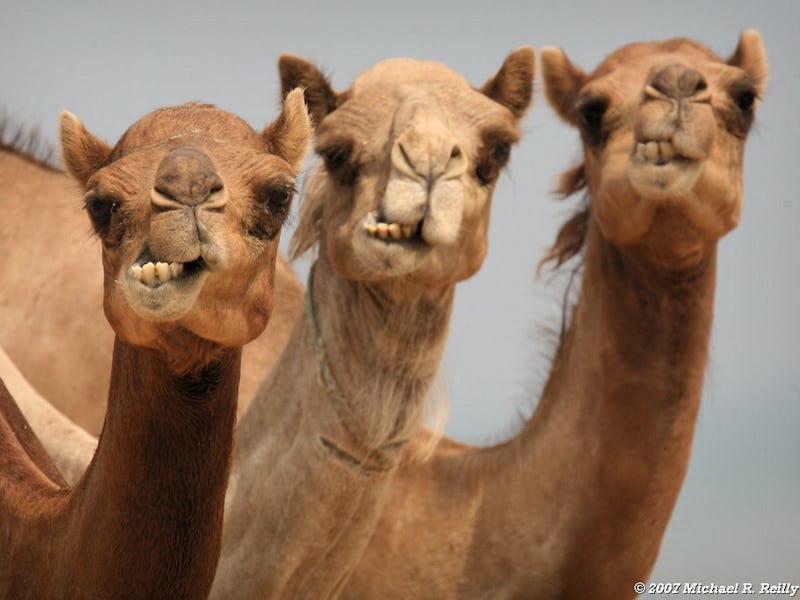DNA Shows Camels Will Be the Cheeky Desert Survivors of Climate Change
Dromedaries show surprising genetic diversity and adaptability compared with other domesticated animals.

Usually, when humans mess with nature, nature ends up the poorer for it. Not so in the case of the dromedary, that moody one-humped camel that has helped humans with transportation, food, and survival in the desert for thousands of years. The domesticated dromedary not only outlived its wild counterpart, it did so while maintaining a surprising level of genetic diversity, according to a new study published by the Proceedings of the National Academy of Sciences.
Normally the domestication of a wild animal comes at a cost to genetic diversity. The animals geographically closest to the wild source population will show the highest levels of diversity, with declines the farther out you look from there. This makes sense — the more separate an animal is from wild cousins, the more inbred it is likely to be. Lack of genetic diversity makes animals less resistant in the face of disease and environmental change.
The dromedary is special for a couple reasons. The biggest one is tied to its usage — for thousands of years camels were the “ships of the desert,” transporting people and goods thousands of miles across North Africa and the Middle East. Because the camels were nomads, they were able to interbreed with distant populations, allowing for a healthy reinvigoration of the gene pool. The researchers sequenced the DNA of more than 1,000 dromedaries across the animal’s range, and found little geographic phenotypic variation, with the one exception of Eastern Africa, where the local population has been relatively isolated.
Tourists ride dromedaries across the Moroccan desert.
The wild dromedary was already on a path towards extinction when domestication occurred, approximately 3,000 years ago. Wild strains died out by about 2,000 years ago. But during the 1,000 years of overlap, the populations weren’t entirely separate. The researchers found that domesticated populations were occasionally restocked from the wild, allowing for continued addition of genetic variation.
It’s ironic that an animal that would have died out without human intervention is now poised to be among the best adapted for a world of human-induced climate change. Earth of the future is getting hotter, and deserts are expanding — both because of changing weather and because of land use and agricultural practices. Dromedaries are naturally adapted to a hot, dry climate, and as a result they could be amazing partners to humans in a changing world, providing food and transportation for communities in areas where the agricultural potential is marginal.
Dromedaries are well suited to the nomadic desert life.
Dromedaries will be better at adapting to the future world because of the genetic variation that is a result of their history as desert wanderers. Having a large variety of genes in a population ups the odds that at least a few of them will be well-adapted to the changing environment. These survivors will pass on their good genes to offspring, allowing for a population to grow that is well suited to the new environmental condition.
Our human ancestors once saved the dromedary from extinction. Now it’s their turn to save us.